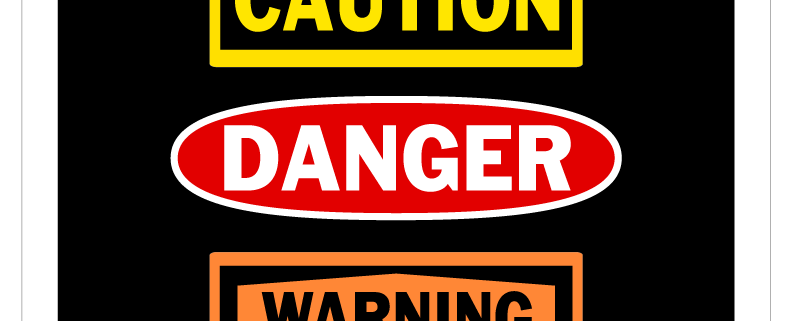What you can Learn from a Label.
 What you can Learn from a Label.
What you can Learn from a Label.
By Bill Adler, MPH, RS
Technical Food Safety Consultant
Yesterday, I met with a farming friend who has a couple of college degrees and a smattering of super intense biochemistry courses under his belt. We spent some time talking about the Bayer payout of $9 billion dollars to the victims of Round-Up induced medical problems. Part of our discussion was about what labels tell users about the potential problems there are when handling the product. We both agreed that few people really understand what “Caution, Warning and Dangerous” mean and why it’s important to follow the use instructions on labels.
I may sound like a teacher, when I say “Been there, done that.” My wife says I still wear the educator hat when I write on important product safety topics. She’s right. After years of educating people, it’s hard to walk away. But it still amazes me what people don’t know about the products they use every day. To that end, it’s been decided to educate our customers a little more about labels, so here goes.
“CAUTION” means multiple things based on circumstances. Being cautious when picking a college or a sign that makes you aware that something that could cause a falling accident is in the area.
A “WARNING” label tells us there is a danger of serious harm or misfortune ahead. It’s like a stop sign telling us to stop what we’re doing, look around for oncoming traffic and proceed accordingly. Signs saying: “Warning: unauthorized entry is prohibited” or, “Warning: guard dog on-premises” Or, “Warning: substance contains very flammable liquids–keep away from open flames” all give you the reason why your brain has to be engaged in these situations.
A sign that says “DANGER” is a warning of injury, loss, or pain. A dangerous situation provides risk, hazard, or some sort of peril. With the exception of road signs, it always defines what is in the product or situation that could injure you. Examples might include, “DANGER, the product can cause severe skin reaction” is different than being cautious when working with a chemical. In a nutshell, using CAUTION or being CAUTIOUS means being aware that there are situations that deserve your concentrated attention. Seeing the word ‘caution’ should make you focus your attention and think about how to avoid whatever it is that could negatively affect you. An example would be a yellow “Caution – Wet Floor” sign, “Caution – Always use with protective gloves,” or “DANGER: May cause severe drowsiness.”
The Occupational Safety and Health Administration and the U.S. Environmental Protection Agency dictate what hazard words are used to notify users of the perils they face.
If you read the label on Earth’s Natural Fruit & Vegetable Wash, you’ll see a “WARNING”. Not to worry, though. Our fruit and veggie wash is a citric acid-based cleaner that completely washes off the product, so there are no carryover chemicals to be worried about. The peril is that it could be an eye irritant. Accidents happen when measuring or pouring the cleaner into a bowl. And if it does put a little water in your eye to flush it out. All the ingredients have been granted GRAS (Generally Recognized As Safe) status by the EPA and the US Food and Drug Administration. Just follow the directions and you’ll end up with produce that’s clean and tastes super good!
Bill Adler is an expert in food safety, foodborne illnesses, and the food service inspection industry. He has conducted training for the Center for Disease Control and Prevention (CDC) teaching local, state, and federal disease investigators as well as working with laboratory specialists and epidemiologists. Bill has worked extensively with the Minnesota Department of Health (MDH) to perform food service inspections and train local and state public health employees.



